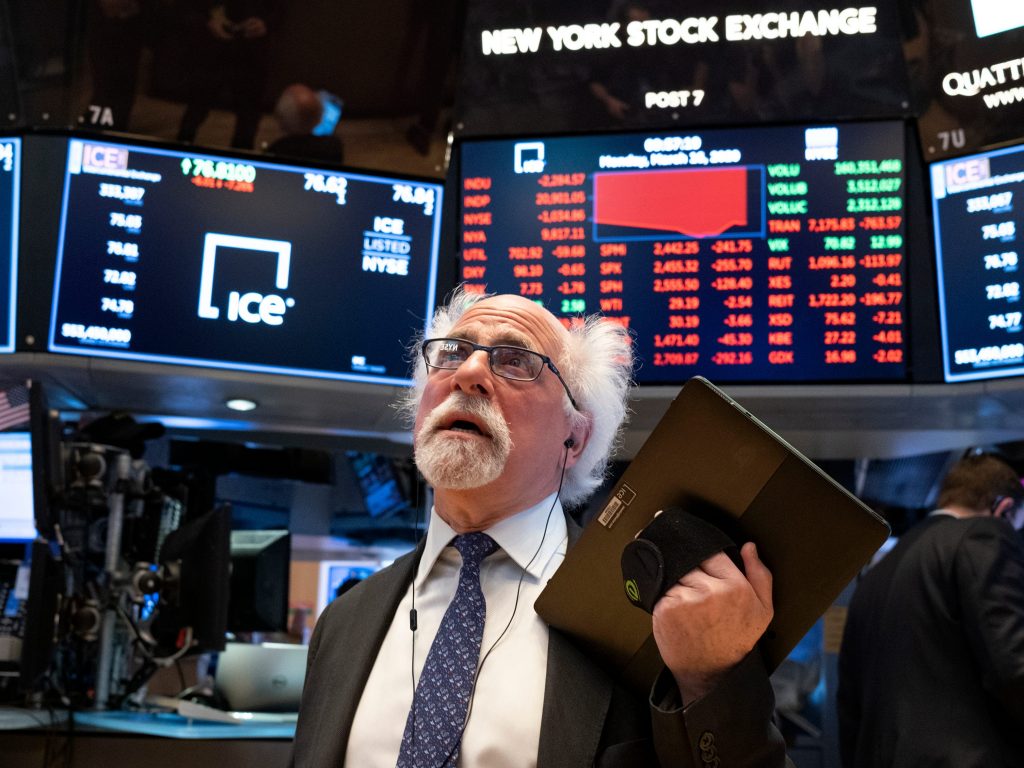- All eyes are on the Fed meeting as a result of stronger-than-expected inflation readings recently.
- Paul Tudor Jones said to “go all-in on the inflation trades” if the Fed dismisses rising prices.
- Insider compiles 3 such inflation trades and 3 hedging strategies if the Fed makes a U-turn.
All eyes are on the Fed’s meeting this week as one hotter-than-expected inflation reading after another keeps adding to the inflationary pressure weighing on the US economy and financial markets.
The Producer Price Index, which measures prices that suppliers charge businesses, rose 0.8% from April and 6.6% year-over-year, making it the largest 12-month increase on record. The Consumer Price Index, which measures final prices paid for goods and services, surged 5% in May from a year ago, another 12-month record since August 2008.
While Fed Chairman Jerome Powell has repeatedly described the threat of inflation as “transitory,” billionaire hedge fund manager Paul Tudor Jones begged to disagree.
“If they treat these numbers – which were material events, they were very material – if they treat them with nonchalance, I think it’s just a green light to bet heavily on every inflation trade,” the founder of Tudor Investment Corporation told CNBC on Monday.
Kyle Bass, founder and chief investment officer of Hayman Capital Management, went even further. He told CNBC that the actual inflation rate is probably around 12%.
"These are numbers that are designed to artificially be low," he said of the PPI data released on Tuesday. "If you look at a non-chain-weighted index of inflation, we think it's running about 12%."
Whether by conservative or aggressive estimates, these staggering numbers far exceed the Fed's 2% inflation target. While most Wall Street investors seem to have sided with the Fed about the transitoriness of inflation, any hawkish surprise or signs of tapering could have far-reaching implications for the stock, bond, and even crypto markets.
To prepare for both outcomes, Insider compiled both inflation trades that would benefit from rising prices as well as hedging strategies should the Fed deliver a hawkish surprise.
3 inflation trades for a dovish Fed
Tudor Jones said he is certain about having "5% in gold, 5% in bitcoin, 5% in cash, 5% in commodities" in his portfolio. The investment strategists at Wells Fargo Investment Institute, which published its mid-year outlook on Tuesday, would agree with his conviction in gold.
Wells Fargo strategists believe that inflation in the US and around the world could sustain a hotter rate than its pre-pandemic level as global economic activity recovers, but a repeat of the 1970s, which saw some of the highest rates of inflation in the US, is unlikely.
"We believe inflation will decelerate in 2022, but the degree depends on how quickly supply shortages dissipate and how well household and business spending persist in 2022. Especially if the pace of spending remains robust, upward pressure on prices could linger," the strategists wrote in the report.
As such, the strategists are betting on gold to grind higher. The yellow metal, which was trading at $1,855, could reach a range between $2,100 and $2,2o0 by the end of 2022, the strategists predicted.
"We believe sizable amounts of monetary and fiscal stimulus as well as investor concerns over possible inflation should weaken the dollar and shift funds into gold," they wrote. "Some moderation in the pace of economic growth also should drive the yellow metal to all-time highs in 2022."
Amid rising inflation, Bank of America's equity and quant strategist Savita Subramanian recommends that investors own high-quality stocks, which still trade at a deep discount, for the second half of the year. While benefiting from higher prices now, these stocks could also enjoy a boost from the eventual tapering, she said in a Monday note.
Specifically, the bank's tactical quantitative framework favors the financials, materials, and energy sectors while ranking the technology and consumer discretionary sectors at the bottom.
UBS strategists led by Stuart Kaiser like value or commodity-based cyclicals, which he thinks will benefit from higher inflation breakevens. Within stocks, the team is betting on the upside in the SPDR S&P Metals and Mining ETF (XME), SPDR S&P Bank ETF (KBE), and Europe while also categorizing large-cap tech as the "most negatively exposed," they wrote in a Monday research note.
3 hedging strategies against a hawkish surprise
While the market is expecting the Fed to keep its quantitative easing program in place, on the off chance that it starts to tighten and hike rates, the markets could be headed for a sharp drawdown.
"The drop would be exacerbated by the degree of overvaluation likely in the aftermath of the bubble. With selling begetting selling, the pullback in the S&P would likely, in our view, far exceed the normal 20% pullback we get from time to time in bear market corrections," Stephen Auth, equities chief investment officer at $625 billion investment manager Federated Hermes, said in a recent client note.
In that case, analysts and investors say it would be time to get defensive.
Linda Bakhshian, a senior portfolio manager at Federated, believes that maintaining a balanced portfolio of cyclical value and high-quality growth stocks is a good hedging strategy if the Fed does tilt.
"What you want to do is have short-dated assets but balance that with some longer-dated assets as well so you have your financials in there for example, but you also have your technology," she said in an interview. "I think there are two sets of growth stocks and we lean more towards the established companies that do have strong balance sheets and do show higher growth in the market, but have the pricing power and longevity to prove that they can survive through multiple cycles."
David Keller, the chief market strategist at StockCharts.com, said there is a small chance that the Fed adopts a more hawkish stance this week, which means investors should consider whether gold has a place in their portfolios.
"Gold is often seen as an inflation hedge, but also, we are seeing a supercycle in commodities with broad strength in crude oil and precious metals," he said in an e-mailed interview. "Gold also tends to be less correlated with stocks so can provide diversification to a portfolio during uncertain times."
Ed Clissold, the chief US strategist at Ned Davis Research, said if the Fed tapers sooner and more severely than expected, it would remove one of the single biggest supporting factors for the market rally since March 2020.
"Looking at the 2013 taper tantrum and 2016 rate hike tantrum, most of the backup in interest rates happened before the Fed executed its strategy. This cycle, the 10-year has already rallied 122 basis points on the economic reopening," Clissold said in an e-mailed interview. "An earlier-than-expected taper could be interpreted as negative for the economy, earnings, and the market, which would favor defensive sectors like utilities, real estate, and consumer staples."

